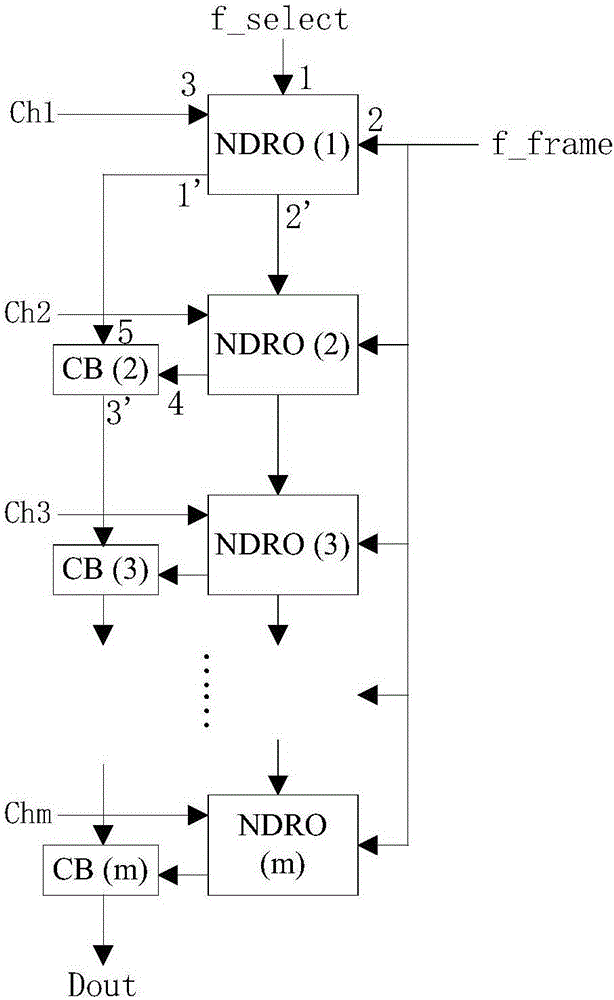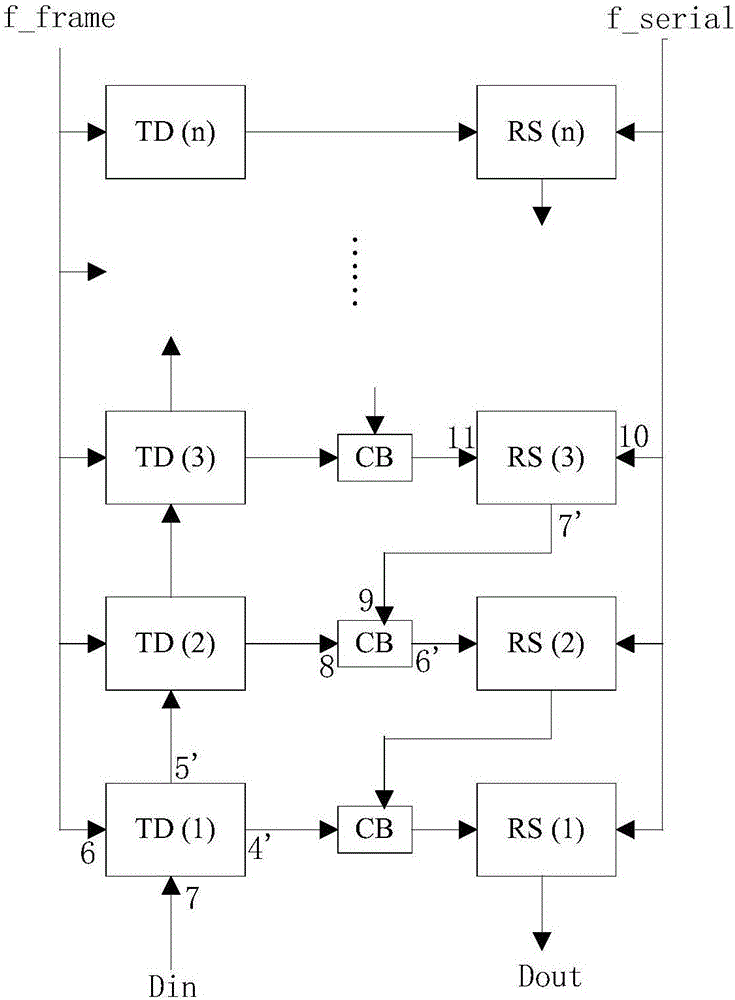Low-temperature superconductive reading circuit based on ERSFQ and reading system
A low-temperature superconducting and read-out circuit technology, applied in the direction of using electric/magnetic devices to transmit sensing components, can solve the problems of large heat load and weak anti-noise interference ability of circuit systems, achieve low power consumption, improve anti-noise Interference capability, the effect of reducing the number of transmission lines
- Summary
- Abstract
- Description
- Claims
- Application Information
AI Technical Summary
Problems solved by technology
Method used
Image
Examples
Embodiment 1
[0064] Such as figure 1 As shown, the present embodiment provides a low-temperature superconducting readout circuit based on an ERSFQ circuit, and the low-temperature superconducting readout circuit includes:
[0065] m superconducting quantum interference devices (SQUIDs), connected to the low-temperature superconducting sensor array, for converting the multiple output signals of the low-temperature superconducting sensor array into multiple SFQ pulse signals;
[0066] The ERSFQ circuit is connected to the m superconducting quantum interferometers, and is used to convert the multi-channel SFQ pulse signal into a binary single-channel pulse signal for output;
[0067] A driving amplifier circuit, connected to the ERSFQ circuit, for amplifying and outputting the binary single pulse signal;
[0068] Wherein, m is an integer greater than 1.
[0069] Preferably, in this embodiment, the low temperature superconducting sensor array includes a transition edge sensor (TES) array or ...
Embodiment 2
[0094] Such as Figure 7 As shown, the present embodiment also provides a readout system, which includes:
[0095] The low-temperature superconducting readout circuit based on the ERSFQ circuit described in Embodiment 1 is used to convert the output signal of the low-temperature superconducting sensor array into a binary single-channel pulse signal and amplify it;
[0096] The second transmission line is connected to the low-temperature superconducting readout circuit based on the ERSFQ circuit, and is used to transmit the output signal of the low-temperature superconducting readout circuit based on the ERSFQ circuit;
[0097] The room temperature readout circuit is connected with the second transmission line and is used to read out the output signal of the low temperature superconducting readout circuit based on the ERSFQ circuit.
[0098] Specifically, the second transmission line includes one or both of a superconducting transmission line or a Josephson junction transmissi...
PUM
 Login to View More
Login to View More Abstract
Description
Claims
Application Information
 Login to View More
Login to View More - R&D
- Intellectual Property
- Life Sciences
- Materials
- Tech Scout
- Unparalleled Data Quality
- Higher Quality Content
- 60% Fewer Hallucinations
Browse by: Latest US Patents, China's latest patents, Technical Efficacy Thesaurus, Application Domain, Technology Topic, Popular Technical Reports.
© 2025 PatSnap. All rights reserved.Legal|Privacy policy|Modern Slavery Act Transparency Statement|Sitemap|About US| Contact US: help@patsnap.com



